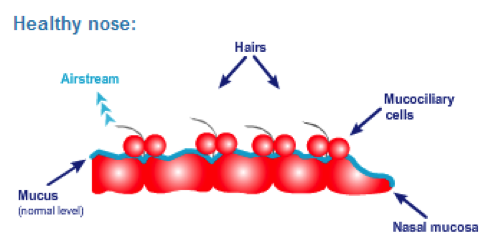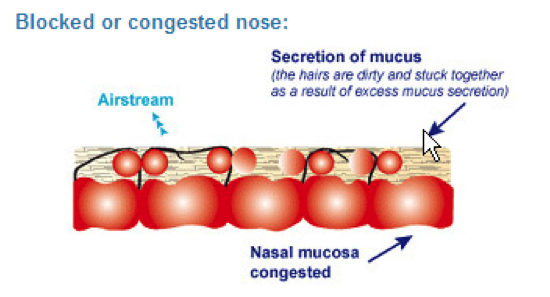What do you think the nose is used for?
Why do we have a nose?
To smell – did you know that the olfactory organ helps us smell odours?
To breathe – did you know that 15,000 litres of air are filtered daily?
To speak – the nose forms a resonating cavity for the voice and amplifies and makes sounds audible.
When we breathe, the nose performs a crucial role as it filters, moistens and warms the air we inhale.
There are three turbinate bones on both sides of the nose, lined with blood vessels, cilia and mucous to trap impurities such as pollutants and bacteria and moisten and warm the air. The nose cleans and warms up the air we breathe before it reaches our lungs.
We have looked at the process of filtering before, when we filtered toys, and when we cleaned up water. The nose filters the air a little differently.
Inside the nose are millions of very tiny hairs called cilia. The hairs move as air is breathed in, trapping particles. Underneath the hairs are glands and goblet cells which produce mucus. This traps the particles, which are carried on the moving cilia to the back of the nose, where they are swallowed together with the mucus. That sounds a bit gross. But it is necessary to keep our lungs healthy.
This mechanism is very important in protecting us from the harmful effects of pollutants and pathogens in the air we breathe. If the nose cilia stop working, mucous becomes trapped, and the hairs stop beating, potentially leading to blocked noses and sinuses.
Last Updated on January 23, 2023 by Emma Vanstone



Love it! We use Sterimar all the time, especially now we’re into cold season, so I’m sure the kids will love to read this and think about how it actually works 🙂